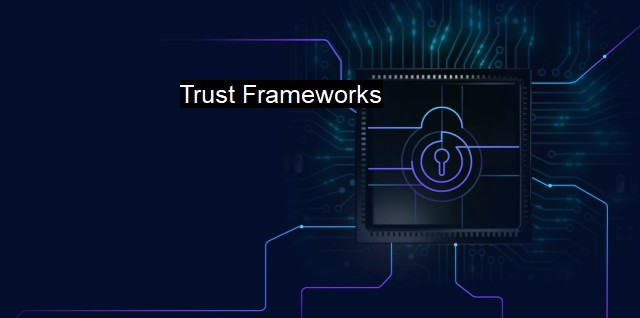What are Trust Frameworks?
Understanding Trust Frameworks: A Vital Component of Cybersecurity in the Modern Age
Trust Frameworks are essential tools in cybersecurity that define standards, rules, procedures, and policies that apply in the digital world when parties have to interact and trust each other. They ensure authenticity, integrity, and provenance in the digital world, addressing issues related with the authentication of various transactions.Trust Frameworks are crucial in assuring that digital transactions are as secure as physical ones. They ensure that the involved parties are who they claim to be. They also define the level of assurance required to establish and maintain trust. By acting as predefined agreements, they set up consequences for breaking agreed-upon rules and abiding procedures.
Consider a typical day-to-day transaction on an online platform. Here, the trust framework involves the rules and procedures that must be followed by website administrators, developers, cybersecurity experts, and end-users. These entities need to trust each other for any meaningful digital transaction. Under a Trust Framework, each of these parties agree to follow specific protocols, rules, and standards during the transactions.
A typical example is an SSL (Secure Sockets Layer) certificate, which guarantees the security of sensitive data like credit card details and social security numbers while transmitting from a browser to the web server. It is issued only after the meticulous validation of a business by SSL provider as per the Trust Framework rules.
In Trust Frameworks, different levels of trust require different kinds of authentication processes. This customization allows each organization to verify the identity of other organizations or individual users based on the necessity of a transaction. For highly sensitive transactions such as setting up a bank account, the authentication process involves rigorous steps like biometric verification as opposed to an e-commerce browsing session that may call for less stringent security measures.
With antivirus software and general cyber security tools, Trust Frameworks provide the standard for the safe exchange of digital certificates between a business, its shareholders, and its customers. Trust Frameworks lay the groundwork for these parties to establish trusting relationships in digital transactions. For instance, anti-malware and antivirus tools run on trust, with users relying on the software's reputation, other users' experiences, and its effectiveness in protecting against threats.
Trust Frameworks in cybersecurity also include measures to counter the sophisticated digital hazards that plague the web continuous. These range from password theft, data breaches, ransomware, phishing, to Distributed Denial of Service (DDoS) attacks. Therefore, effective Trust Frameworks must remain adaptable to the dynamics of cyber threats and attacks. They facilitate trust digitalization, maintenance, and evolution by making sure that organizations and systems adhere to changing policies, procedures, and technologies.
Understanding and implementing proper Trust Frameworks is fundamental for organizations to not just maintain security, but also to cultivate trust in their technology ecosystem. Through robust authentication measures, government policy guidelines, industry best practices, and technologies such as encryption and digital signatures, a secure and standardized environment can be created that fosters trust among all entities. Shaping the increasingly complex landscape of digital trust, Trust Frameworks secure our present and broadly outline the safe paths of our digital future.

Trust Frameworks FAQs
What is a trust framework in cybersecurity?
A trust framework in cybersecurity refers to a set of standards, policies, and procedures that establish the trust levels between entities in a system. It defines the rules and requirements for secure communication, authentication, and data sharing.How does a trust framework help in antivirus protection?
A trust framework plays a crucial role in antivirus protection by defining the trusted sources of data and establishing the authentication procedures for accessing them. It helps antivirus solutions to identify malicious files and block them while allowing legitimate data to pass through. It also ensures that the antivirus software itself is secure and trusted.What are the benefits of adopting a trust framework for cybersecurity?
Adopting a trust framework for cybersecurity offers various benefits, such as reducing the risk of data breaches, improving the reliability and quality of communication, enhancing user confidence and trust, and facilitating compliance with regulatory requirements. It also promotes interoperability and standardization, making it easier to integrate different technologies and systems.What are the common types of trust frameworks used in cybersecurity?
There are several types of trust frameworks used in cybersecurity, including PKI (Public Key Infrastructure), SAML (Security Assertion Markup Language), OAuth (Open Authorization), and OpenID Connect. Each of these frameworks has its own set of standards and protocols for ensuring secure communication and authentication between entities. The choice of the trust framework depends on the specific needs and requirements of the system.| | A | | | B | | | C | | | D | | | E | | | F | | | G | | | H | | | I | | | J | | | K | | | L | | | M | |
| | N | | | O | | | P | | | Q | | | R | | | S | | | T | | | U | | | V | | | W | | | X | | | Y | | | Z | |
| | 1 | | | 2 | | | 3 | | | 4 | | | 7 | | | 8 | | |||||||